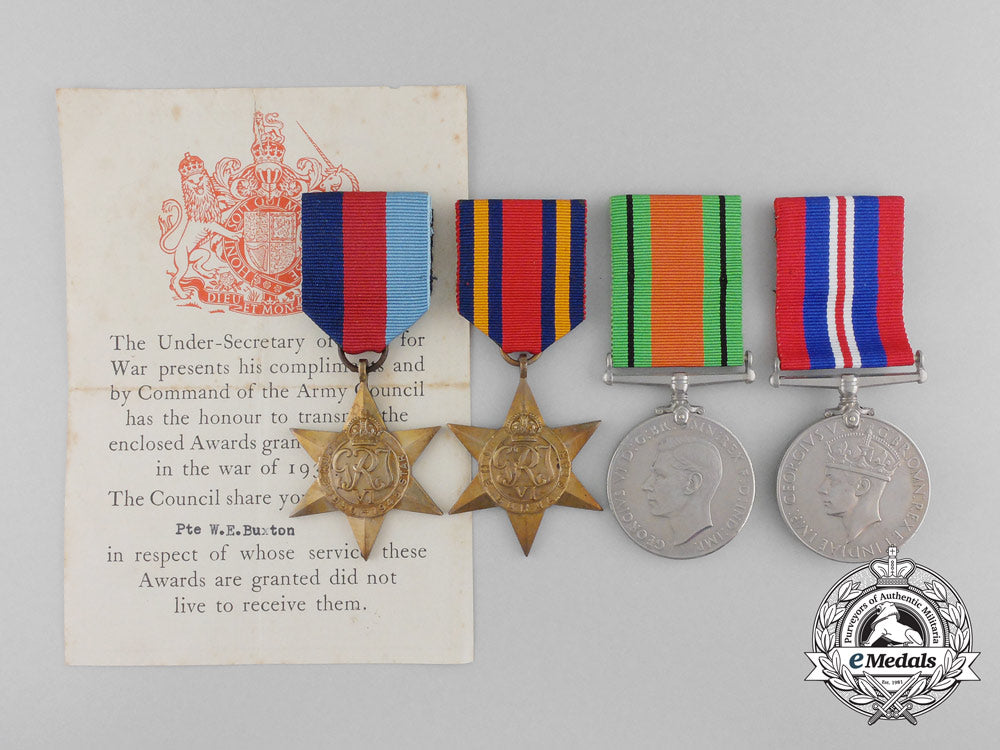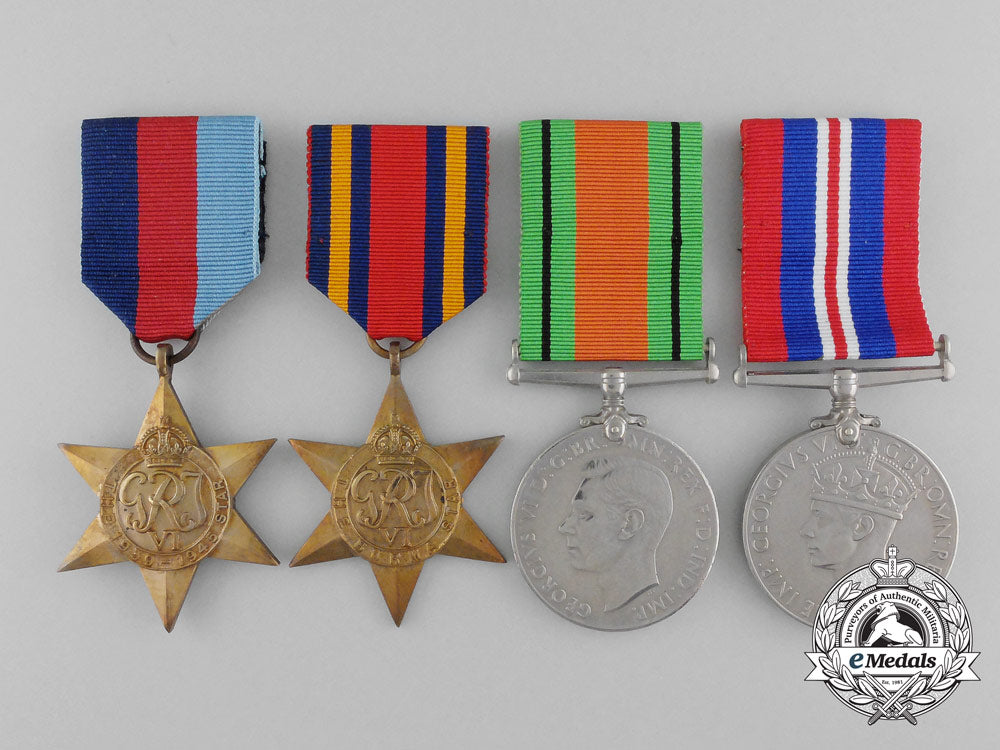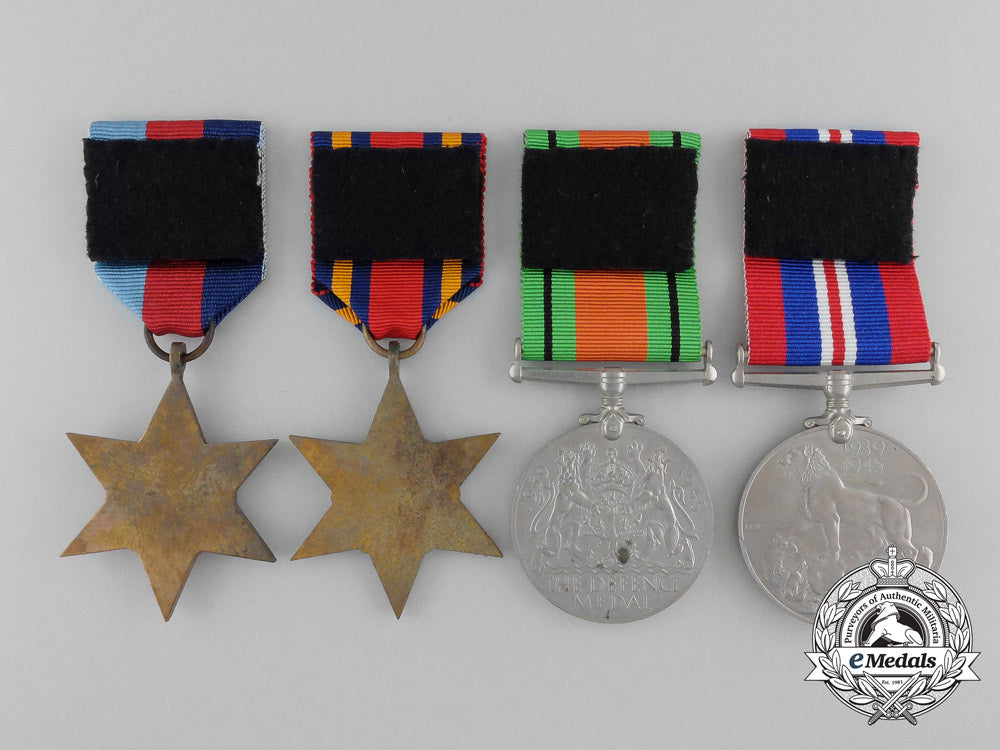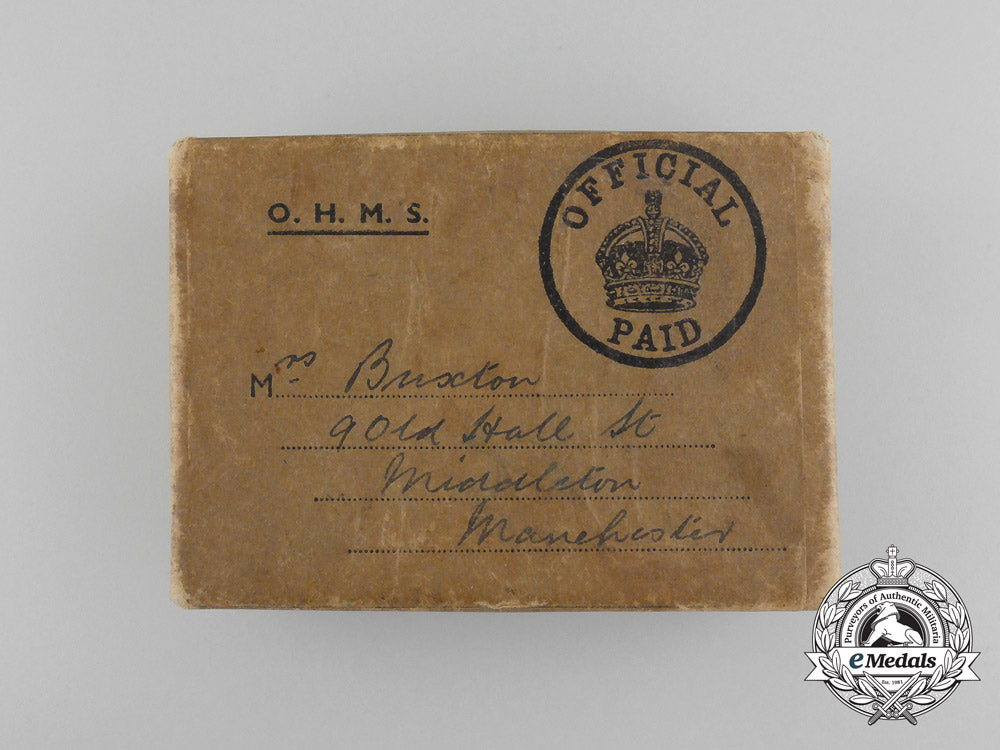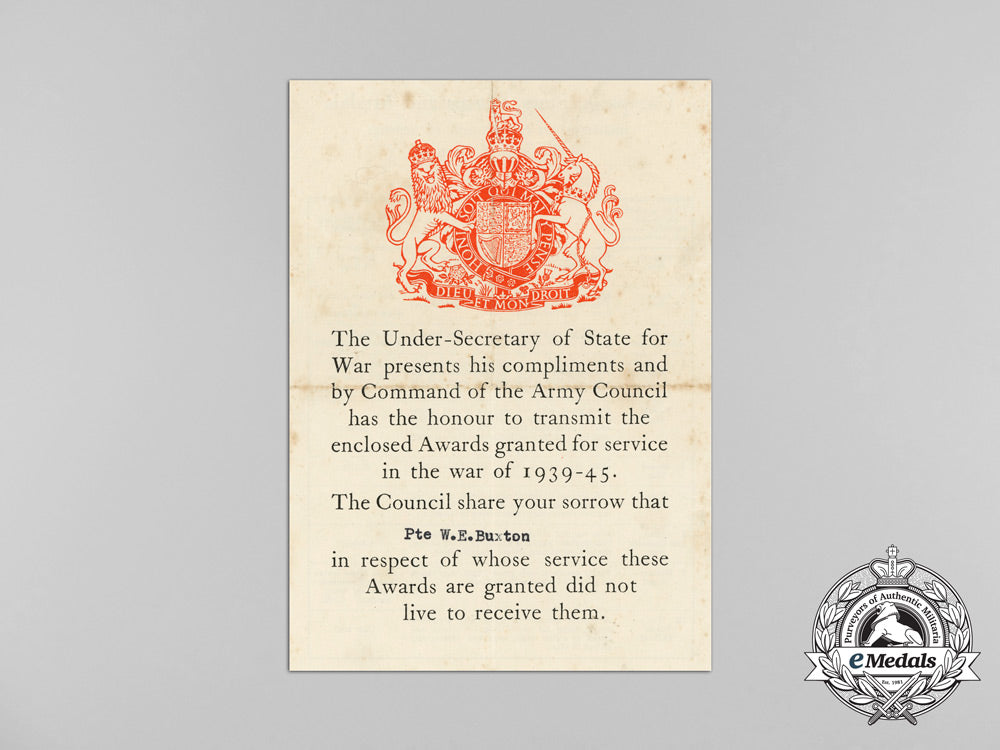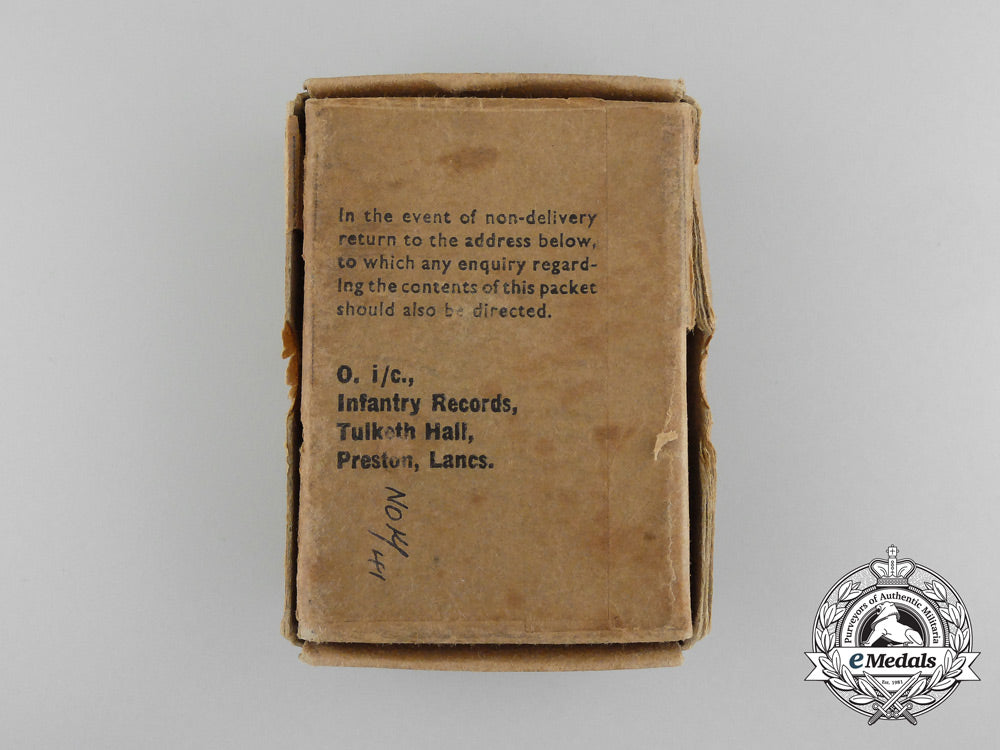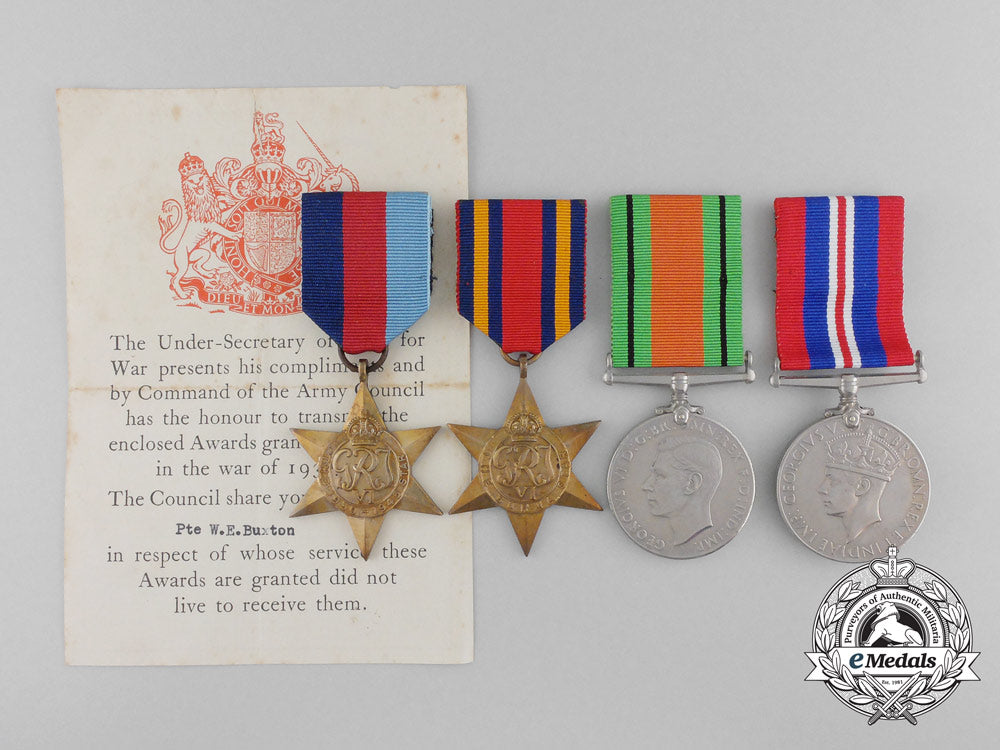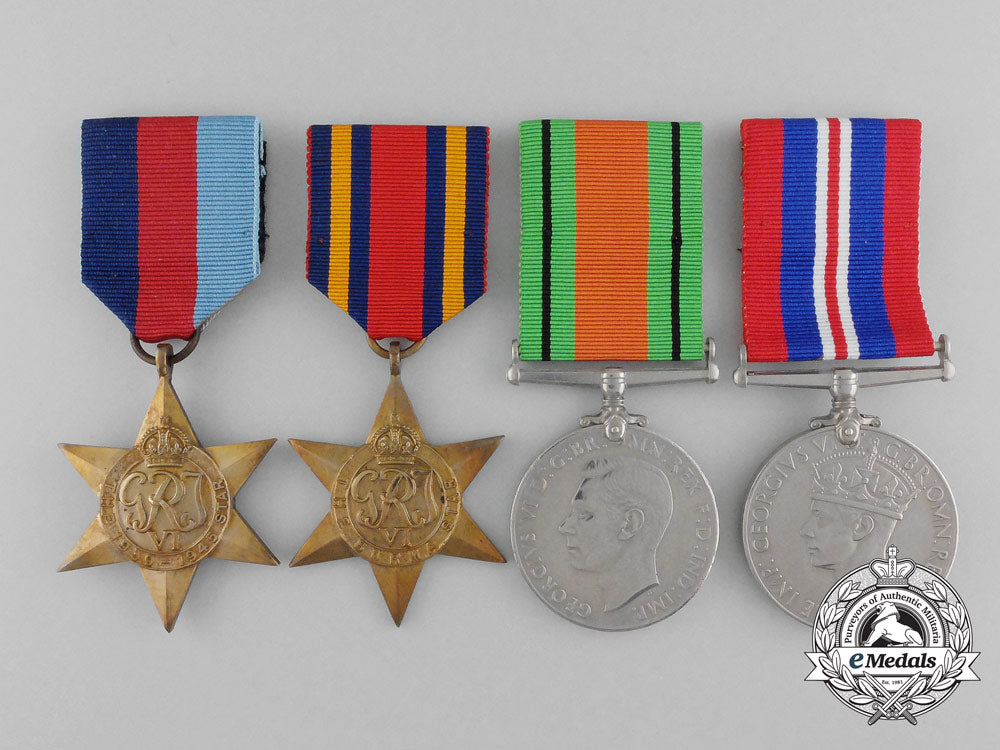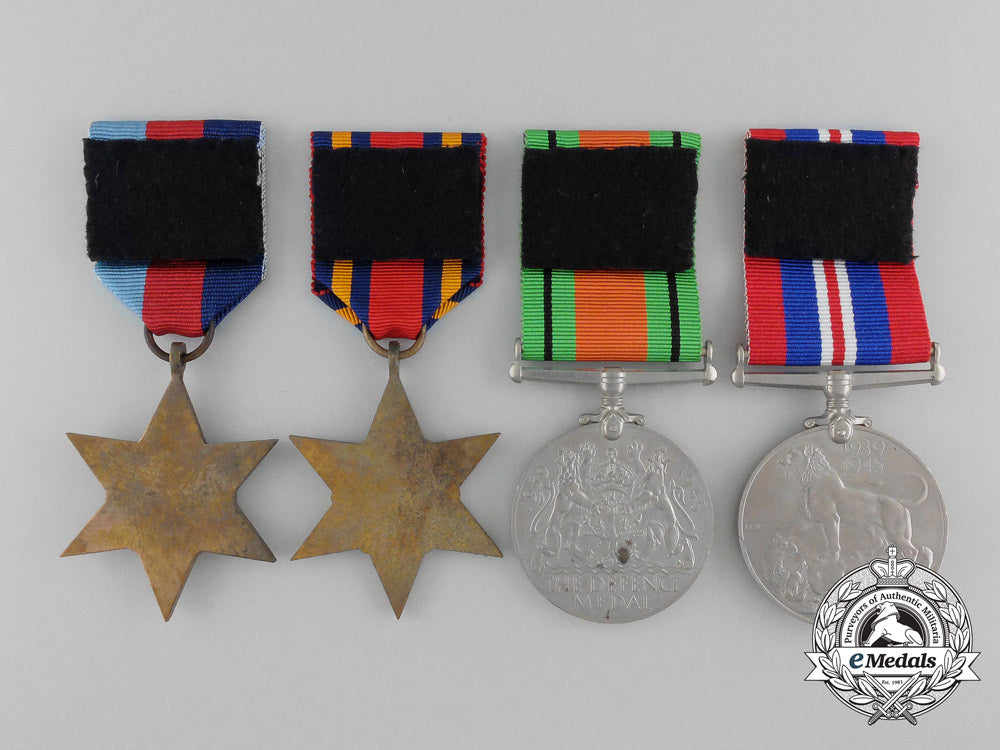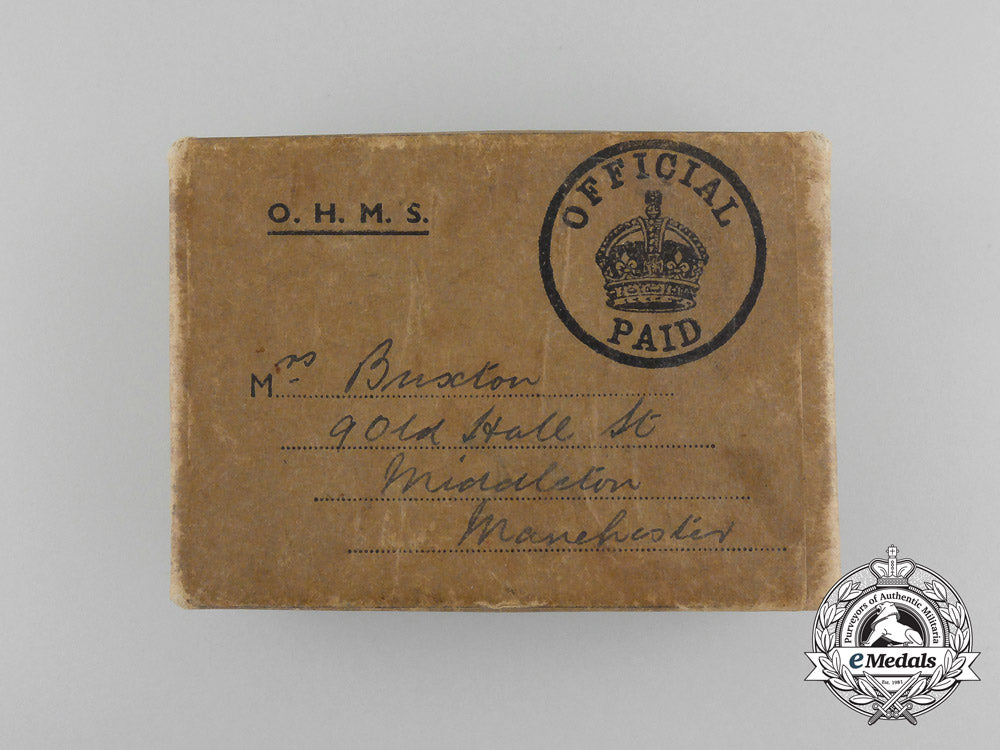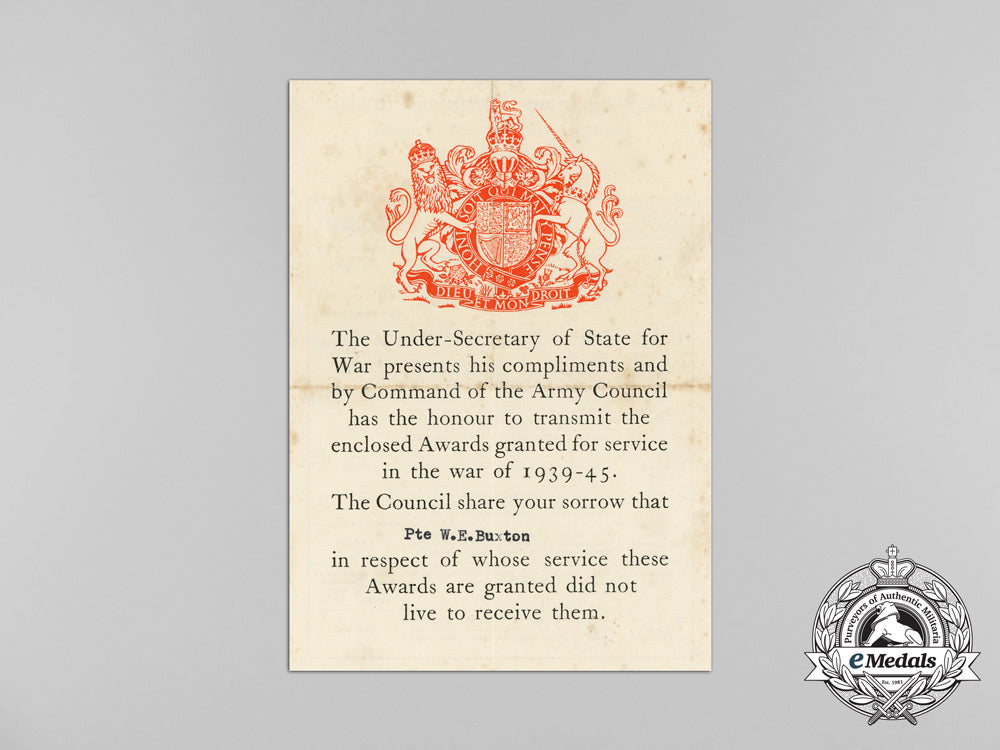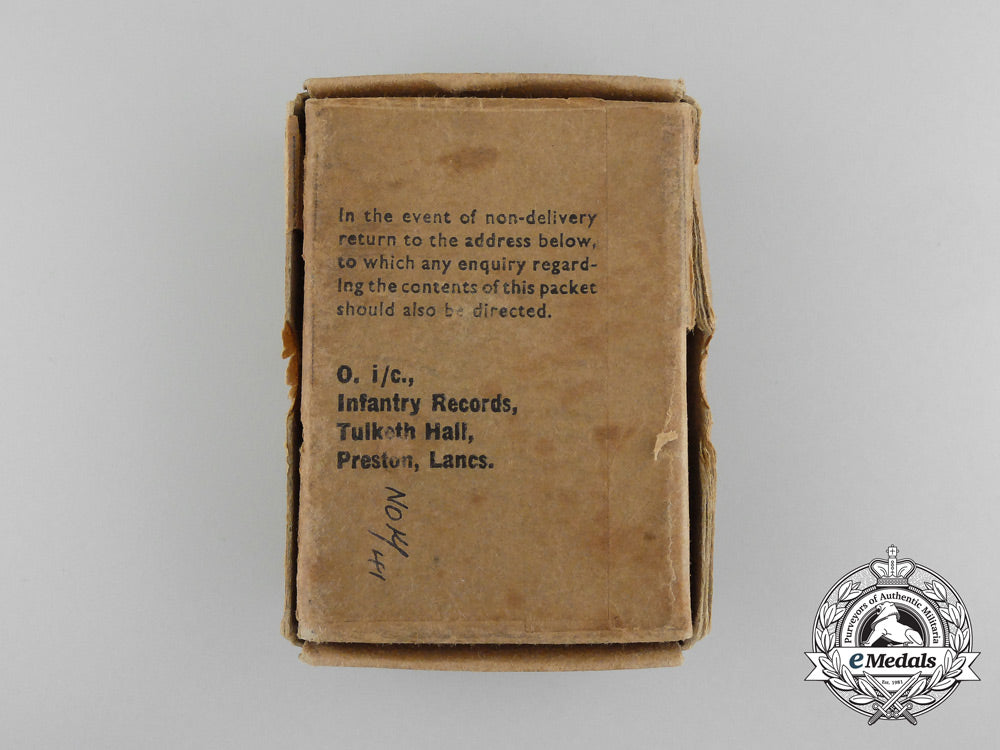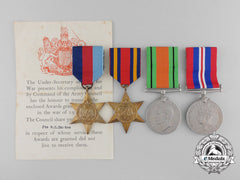
LOADING ...
In response to evolving domestic opinion, eMedals Inc has made the conscious decision to remove the presentation of German Third Reich historical artifacts from our online catalogue. For three decades, eMedals Inc has made an effort to preserve history in all its forms. As historians and researchers, we have managed sensitive articles and materials with the greatest of care and respect for their past and present social context. We acknowledge the growing sentiments put forth by the Canadian public and have taken proactive actions to address this opinion.

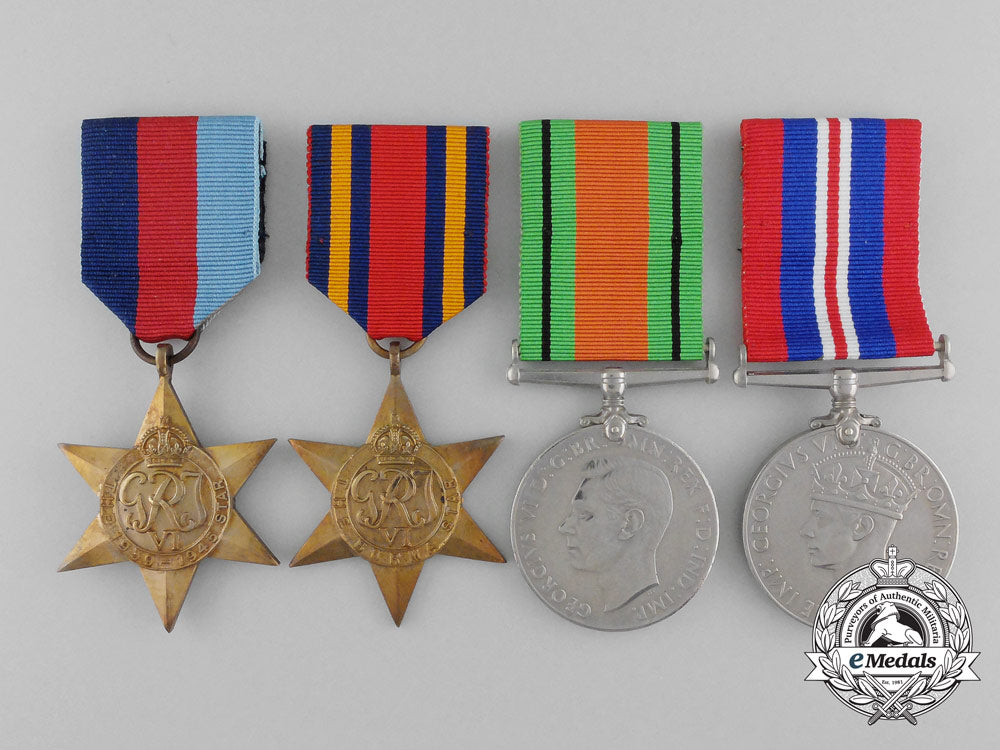
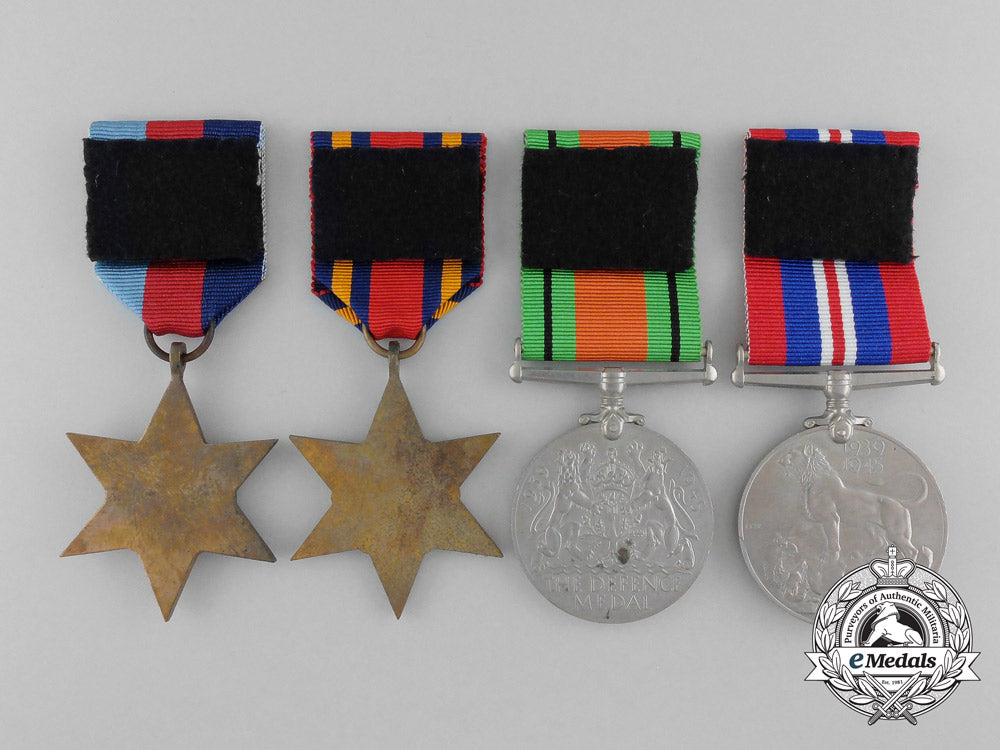
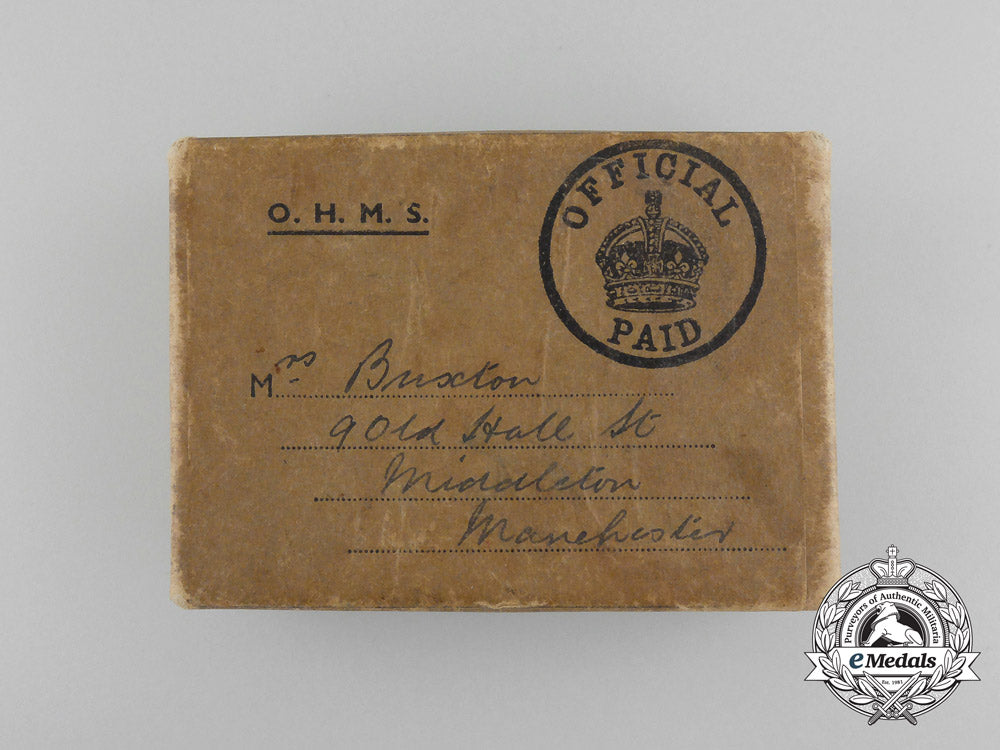

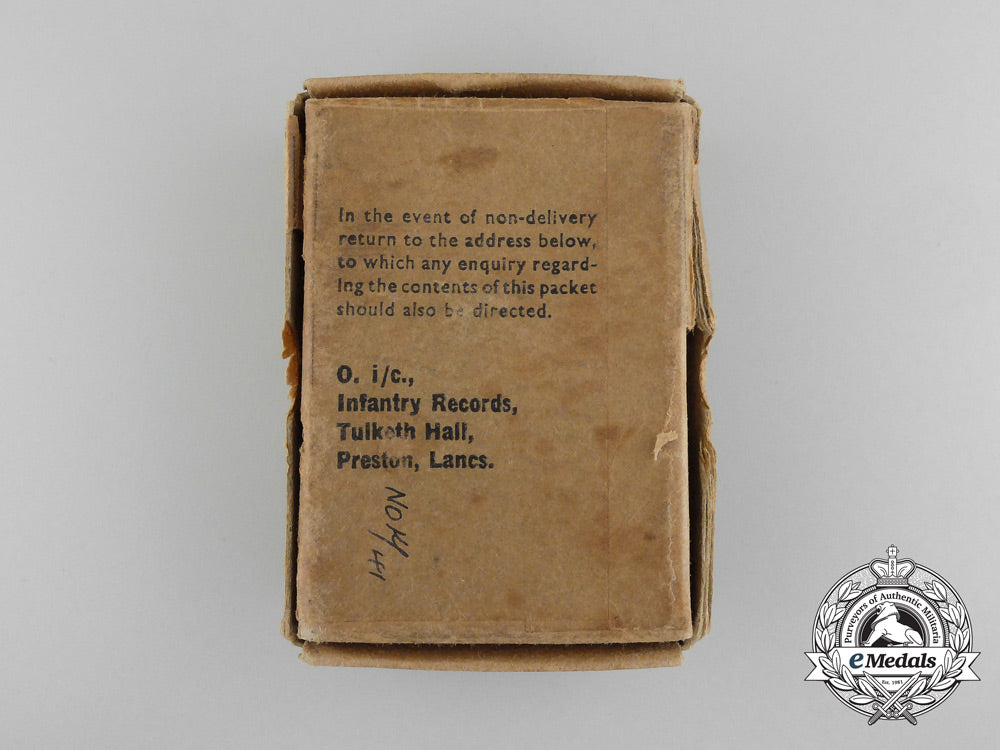
A Second War Grouping To Private Buxton; Border Regiment Kia In India 1944
A Second War Grouping To Private Buxton; Border Regiment Kia In India 1944
SKU: ITEM: GB6005
Current Bid:
Your Max Bid:
Bid History:
Time Remaining:
Couldn't load pickup availability
Shipping Details
Shipping Details
eMedals offers rapid domestic and international shipping. Orders received prior to 12:00pm (EST) will be shipped on the same business day.* Orders placed on Canadian Federal holidays will be dispatched the subsequent business day. Courier tracking numbers are provided for all shipments. All items purchased from eMedals can be returned for a full monetary refund or merchandise credit, providing the criteria presented in our Terms & Conditions are met. *Please note that the addition of a COA may impact dispatch time.
Shipping Details
eMedals offers rapid domestic and international shipping. Orders received prior to 12:00pm (EST) will be shipped on the same business day.* Orders placed on Canadian Federal holidays will be dispatched the subsequent business day. Courier tracking numbers are provided for all shipments. All items purchased from eMedals can be returned for a full monetary refund or merchandise credit, providing the criteria presented in our Terms & Conditions are met. *Please note that the addition of a COA may impact dispatch time.
Description
Description
Great Britain. Second World War Group of Four, Private William E. Buxton, 9th Battalion, Border Regiment, KIA
1939-1945 Star; Burma Star; Defence Medal; and War Medal 1939-1945. Un-named as issued, un-mounted, original ribbons with pads on the back from previous board mounting, oxidation spot on the reverse of the DM, nick on the reverse of the WM, better than very fine. Accompanied by a Medal Awards Condolence Slip (named to "Pte W.E. Burton" and indicating that he was entitled to "4" awards, 102 mm x 142 mm, fold marks, lightly soiled, tear along the top edge) and Medals Cardboard Shipping Container (addressed to "Mrs. Buxton / 9 Old Hall St / Middleton / Manchester", 60 mm x 85 mm x 21.5 mm).
Footnote: William Earl Buxton was the son of William Earl Buxton and Eva Buxton (nee Jaques) of Middleton, Manchester. He served as a Private (3605119) with the 9th Battalion, Border Regiment in the Burma/India theatre during the Second World War. The easiest route from Burma (now Myanmar) to India is through Imphal, the capital of Manipur State in Northeast India, into Assam and after the invasion of Burma, Imphal became a focal point in the defence of India against the Japanese. Early in 1942, as the Japanese approached Rangoon, a very large proportion of its Indian population fled from the city to India, many of them to Upper Burma and so by Chindwin tracks to Assam. In May of that year, Commonwealth forces followed the same route on their retreat to India. In their wake came still more civilian refugees, many of whom died on the arduous journey under ceaseless heavy rain, without transport and food. Of the 400,000 civilians who fled to India about 140,000 passed through Imphal into Assam. The defence of India and the retention of a position from which Burma could be re-entered now became of primary importance. The 23rd Indian Division was formed in Manipur State, new airfields were constructed there, and army and air force reinforcements arrived. Eventually there was a considerable concentration of Commonwealth fighting forces in the Imphal area and from November 1944 onwards, No. 38 General Hospital was posted there. Strategically well placed for attacks on the lines of communication by railway, road and river which were vital for the maintenance of all Allied operations in Burma, Imphal with its airfields was a main objective when the Japanese made their thrust towards India in the spring of 1944. There was severe fighting in the surrounding hills and on the outskirts of the plain and the Japanese succeeded in cutting a long section of the Imphal-Kohima road and holding it for over three months. The Fourteenth Army held on grimly, inflicting heavy punishment on the Japanese. Of all the battles on this frontier of India the siege of Imphal and its relief in the summer of 1944 rank next in importance to the Battle of Kohima. 3605119 Private William E. Buxton, 9th Battalion, Border Regiment was Killed in Action on May 14, 1944, at the age of 21 and is buried in Imphal War Cemetery, Imphal, India, Grave Reference: 8. D. 12. There were originally some 950 burials in Imphal War Cemetery, but after hostilities had ceased, the Army Graves Service brought in graves from two smaller cemeteries in Imphal and from isolated positions in the surrounding region. The cemetery now contains 1,600 Commonwealth burials of the Second World War.
Description
Great Britain. Second World War Group of Four, Private William E. Buxton, 9th Battalion, Border Regiment, KIA
1939-1945 Star; Burma Star; Defence Medal; and War Medal 1939-1945. Un-named as issued, un-mounted, original ribbons with pads on the back from previous board mounting, oxidation spot on the reverse of the DM, nick on the reverse of the WM, better than very fine. Accompanied by a Medal Awards Condolence Slip (named to "Pte W.E. Burton" and indicating that he was entitled to "4" awards, 102 mm x 142 mm, fold marks, lightly soiled, tear along the top edge) and Medals Cardboard Shipping Container (addressed to "Mrs. Buxton / 9 Old Hall St / Middleton / Manchester", 60 mm x 85 mm x 21.5 mm).
Footnote: William Earl Buxton was the son of William Earl Buxton and Eva Buxton (nee Jaques) of Middleton, Manchester. He served as a Private (3605119) with the 9th Battalion, Border Regiment in the Burma/India theatre during the Second World War. The easiest route from Burma (now Myanmar) to India is through Imphal, the capital of Manipur State in Northeast India, into Assam and after the invasion of Burma, Imphal became a focal point in the defence of India against the Japanese. Early in 1942, as the Japanese approached Rangoon, a very large proportion of its Indian population fled from the city to India, many of them to Upper Burma and so by Chindwin tracks to Assam. In May of that year, Commonwealth forces followed the same route on their retreat to India. In their wake came still more civilian refugees, many of whom died on the arduous journey under ceaseless heavy rain, without transport and food. Of the 400,000 civilians who fled to India about 140,000 passed through Imphal into Assam. The defence of India and the retention of a position from which Burma could be re-entered now became of primary importance. The 23rd Indian Division was formed in Manipur State, new airfields were constructed there, and army and air force reinforcements arrived. Eventually there was a considerable concentration of Commonwealth fighting forces in the Imphal area and from November 1944 onwards, No. 38 General Hospital was posted there. Strategically well placed for attacks on the lines of communication by railway, road and river which were vital for the maintenance of all Allied operations in Burma, Imphal with its airfields was a main objective when the Japanese made their thrust towards India in the spring of 1944. There was severe fighting in the surrounding hills and on the outskirts of the plain and the Japanese succeeded in cutting a long section of the Imphal-Kohima road and holding it for over three months. The Fourteenth Army held on grimly, inflicting heavy punishment on the Japanese. Of all the battles on this frontier of India the siege of Imphal and its relief in the summer of 1944 rank next in importance to the Battle of Kohima. 3605119 Private William E. Buxton, 9th Battalion, Border Regiment was Killed in Action on May 14, 1944, at the age of 21 and is buried in Imphal War Cemetery, Imphal, India, Grave Reference: 8. D. 12. There were originally some 950 burials in Imphal War Cemetery, but after hostilities had ceased, the Army Graves Service brought in graves from two smaller cemeteries in Imphal and from isolated positions in the surrounding region. The cemetery now contains 1,600 Commonwealth burials of the Second World War.
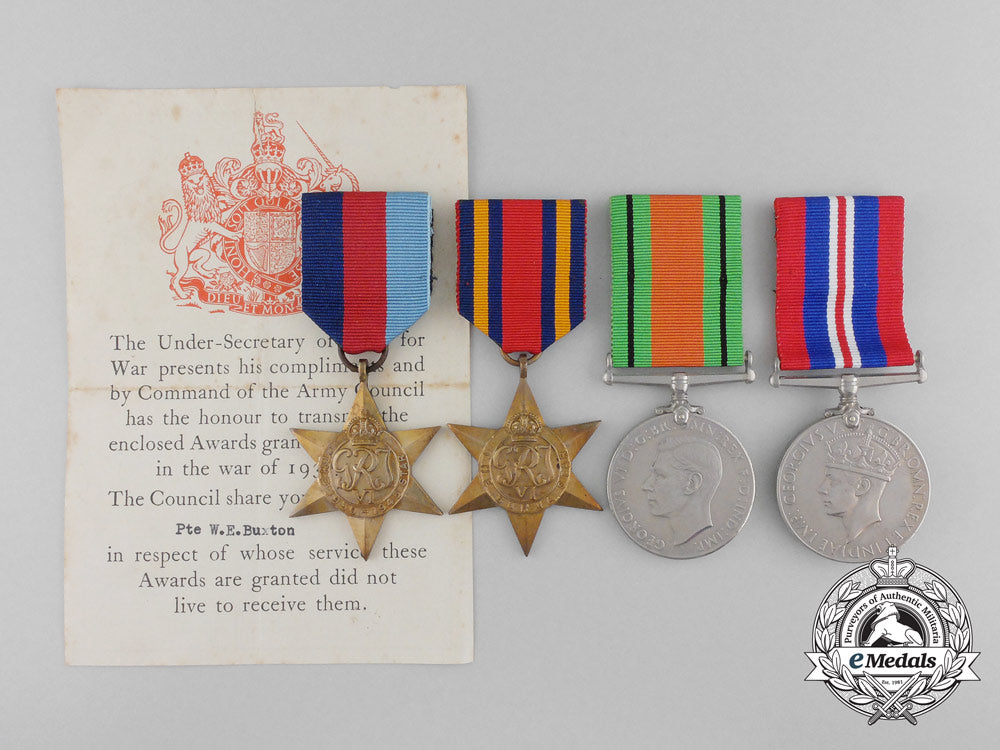
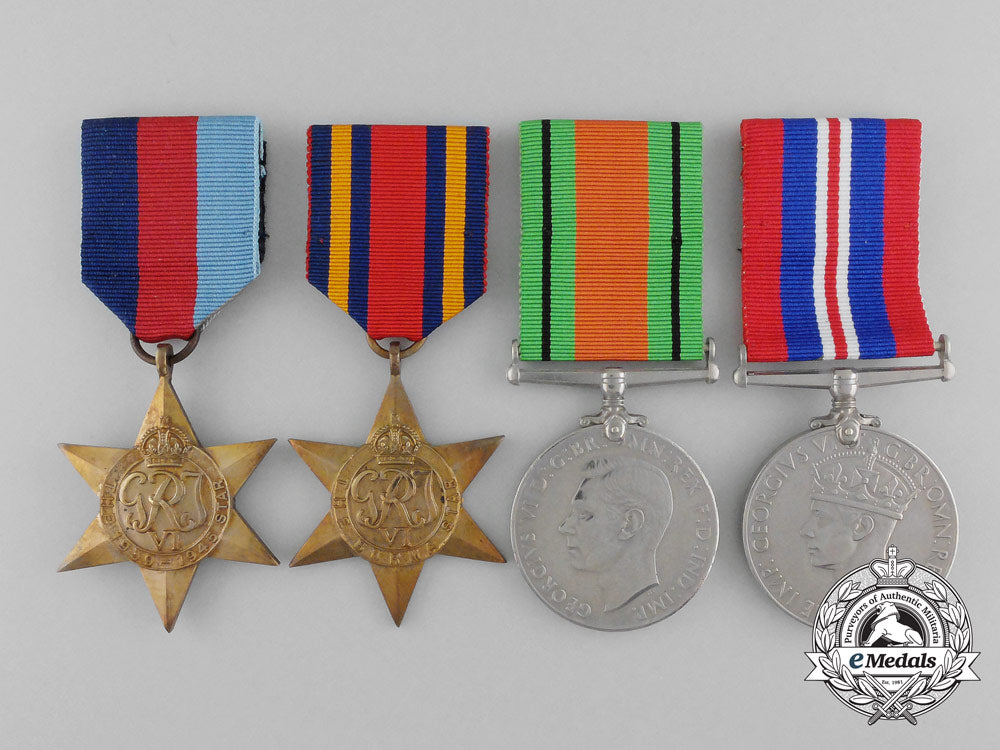

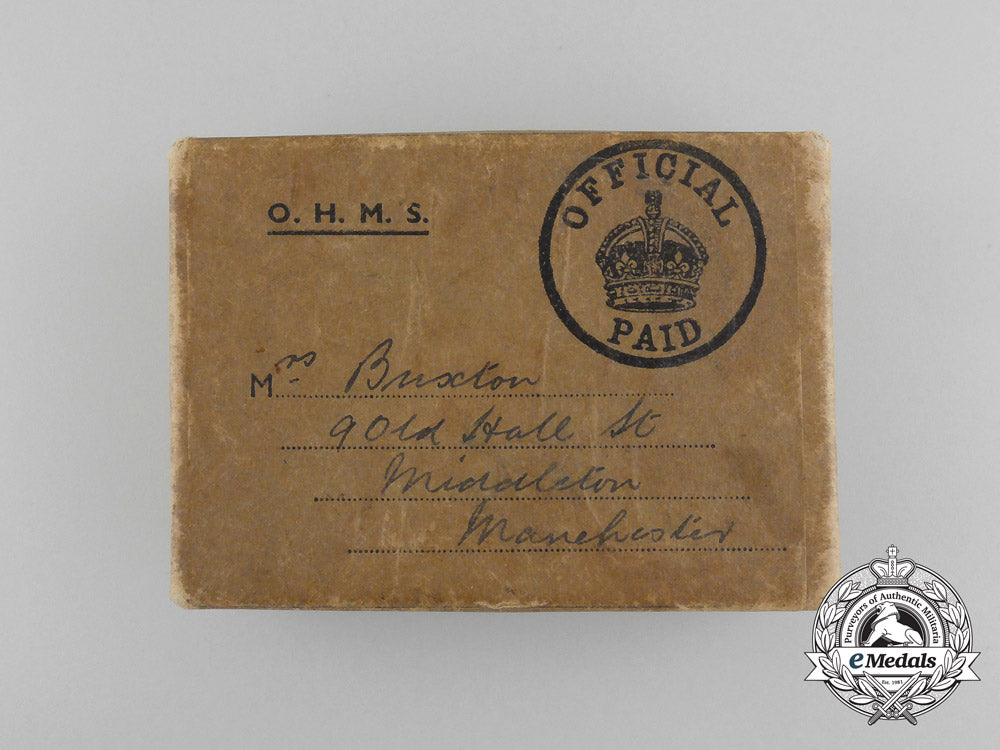
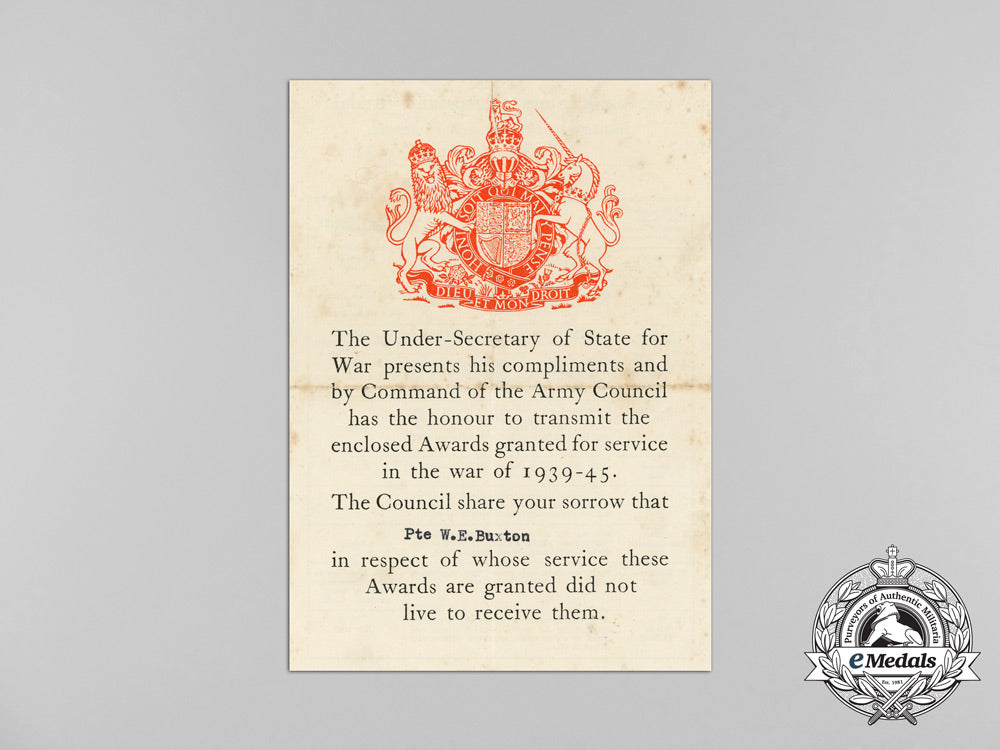
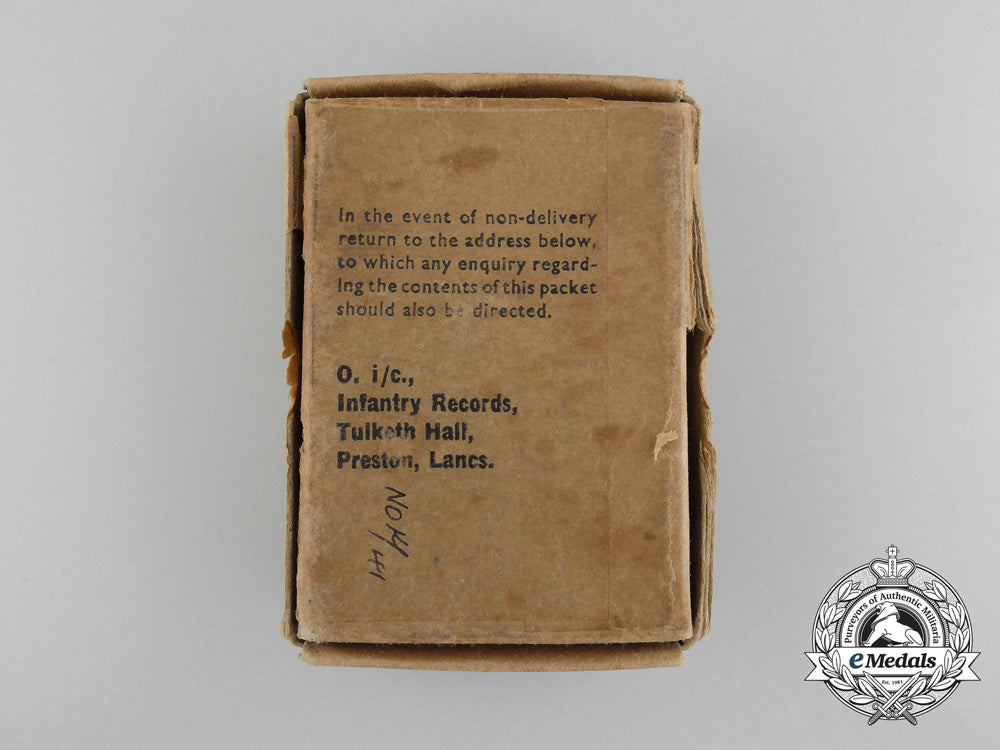
You May Also Like
Japan, Empire. A T90 Civil Defense Helmet, c.1943
W8287
Germany, SA. A Model 1933 Service Dagger, SA-Gruppe Nordsee, by Friedrich von der Kohlen
G59818
Germany, SA. A Model 1933 Service Dagger, SA-Gruppe Pommern, by Gustav Wirth
G59816
Germany, SS. An Estonian Waffen-SS Volunteer’s Sleeve Shield
G50381
Germany, SS. A Waffen-SS Sturmmann Sleeve Insignia
G52846
-
Japan, Empire. A T90 Civil Defense Helmet, c.1943
W8287
Add to CartRegular price $275 USDRegular price $0 USD Sale price $275 USDUnit price / per -
Germany, SA. A Model 1933 Service Dagger, SA-Gruppe Nordsee, by Friedrich von der Kohlen
G59818
Add to CartRegular price $980 USDRegular price $0 USD Sale price $980 USDUnit price / per -
Germany, SA. A Model 1933 Service Dagger, SA-Gruppe Pommern, by Gustav Wirth
G59816
Add to CartRegular price $980 USDRegular price $0 USD Sale price $980 USDUnit price / per -
Germany, SS. An Estonian Waffen-SS Volunteer’s Sleeve Shield
G50381
Add to CartRegular price $150 USDRegular price $0 USD Sale price $150 USDUnit price / per -
Germany, SS. A Waffen-SS Sturmmann Sleeve Insignia
G52846
Add to CartRegular price $135 USDRegular price $0 USD Sale price $135 USDUnit price / per
Do you have a similar item you are interested in selling?
Please complete the form and our client care representatives will contact you.
Sell Item